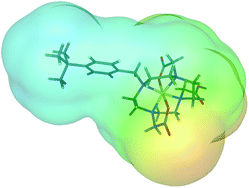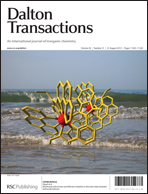The computation of lipophilicities of 64Cu PET systems based on a novel approach for fluctuating charges†
Abstract
A QSPR scheme for the computation of lipophilicities of 64Cu complexes was developed with a training set of 24 tetraazamacrocylic and bispidine-based CuII compounds and their experimentally available 1-octanol–water distribution coefficients. A minimum number of physically meaningful parameters were used in the scheme, and these are primarily based on data available from molecular mechanics calculations, using an established force field for CuII complexes and a recently developed scheme for the calculation of fluctuating atomic charges. The developed model was also applied to an independent validation set and was found to accurately predict distribution coefficients of potential 64Cu PET (


 Please wait while we load your content...
Please wait while we load your content...